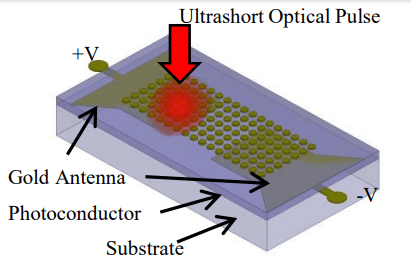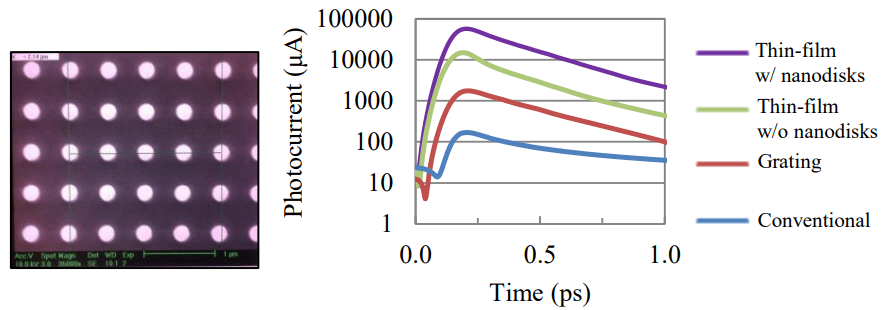Design, Fabrication and Measurement of a Plasmonic Enhanced Terahertz Photoconductive Antenna
Student: Nathan Burford
Degree: Ph.D., December 2016
Major Professor: Dr. Magda El-Shenawee
Research Area(s):
Modeling & Simulation
Photonics
Background/Relevance
- Conventional pulsed THz photoconductive antennas suffer from poor optical-to-THz conversion efficiency.
- High output THz sources are needed for the practical implementation of various imaging applications.
Innovation
- Design a THz photoconductive antenna with plasmonic electrodes to enhance the device performance using novel computational methods.
- Fabricate and test the device and compare to current best in literature.
Approach
- MBE growth of Al0.9Ga0.1As etch stop layer (200 nm) and Low Temperature GaAs active layer (120 nm) on GaAs substrate.
- Photolithography patterning of THz bowtie antennas
- Lapping/selective etching for removal of GaAs substrate and Al0.9Ga0.1 etch stop.
- Electron beam lithography of Au nanodisk arrays
- Mounting to Si focusing lens + wire boding/device packaging
- Measurement of average THz power vs. optical pump power and position, bias voltage, electrode configuration.

Key Results
- Demonstrated x102 higher peak photocurrent over current best in literature.
- Fabricated plasmonic thin-film THz antenna devices.
- Preliminary experimental results show agreement in enhancement trends predicted by the model.

Conclusions
- THz photoconductive antennas with top-located, ultrathin photoconductive layers computationally demonstrate record high optical-to-terahertz conversion efficiency
- Electron beam lithography effectively produces plasmonic nanodisk arrays to further enhance the device performance
- Thin-film plasmonic THz photoconductive antennas successfully fabricated
- Spectral characterization shows 4.8 times higher THz field emission from the fabricated plasmonic thin-film device as compared to the fabricated conventional device
